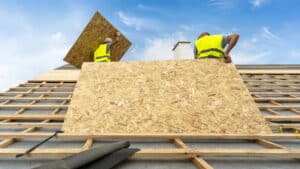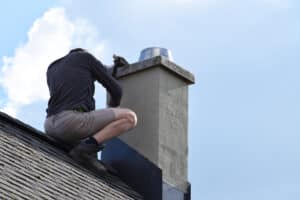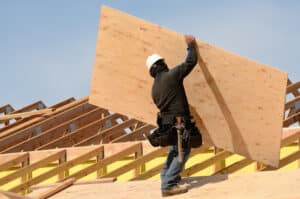Before you schedule any roofing project, it’s essential to understand the anatomy of your roof. While this might seem straightforward to certain people, many homeowners know nothing about the ridge, hip, and valley of their roof. Although you may not have time in your day-to-day life to learn the minor aspects of roofing, this guide can help you familiarize yourself with the standard parts. As a result, you’ll be able to confidently communicate with your roofer during your next roofing project.
Roof Ridges
The roof ridge is the horizontal line that runs the entire length of the roof where the two planes meet. This intersection often creates the highest point on the roof, sometimes known as the peak. Ridge and hip shingles are specifically designed for this section of the roof.
Some homeowners often confuse a ridge with a hip because they both require capping. However, a roof hip is where two roof facets meet to form an exterior vertical angle, while a ridge will always be horizontal and create the roof’s highest point. If you have missing or damaged ridge caps on your roof, you should get them fixed as soon as possible. Even if the damage may not be apparent, it can eventually result in leaks and structural deterioration.
Roof Hips
The hip is the convergence of two roof planes meeting to form a sloping ridge that runs from the peak to the eave. Ridge and hip shingles are designed explicitly for this portion of a roof. The degree of the intersecting angle is known as the hip level. A hip roof has no vertical ends and no gables. Typically, all sides of a hipped roof are equal in length and meet together at the top to form the roof ridge. High winds and tornadoes can tear off the roofing cap on the hip or cause a partial failure of the framing structure under the roof hip. Your roofer may identify damages to the hip and recommend the proper fixes through professional roofing inspections.
Roof Valleys
The roof valley refers to the V-shaped intersection between two sloping roof planes joining at an angle to create a channel for water runoff. Old valleys used to be galvanized and often eroded with time, especially if they trap leaves. A rusted valley can result in roof leaks, and common signs include a stained ceiling under the area on the roof with a valley.
Sometimes, a roof valley in good condition may be blocked with leaves and debris, resulting in a damming effect during heavy rains, especially after a long dry spell. The resulting large amount of water may pour into the roof cavity, causing leaks. That’s why you must maintain your roof valleys properly to prevent leaks. Your roofer may even put leaf guard over valleys to minimize the amount of leaf debris clogging the valleys and causing leaks.
To learn more about various roof layers and components, speak to our roofing experts at Adam Vaillancourt Roofing. We have decades of experience installing, replacing, and repairing roofs for homeowners throughout Southern New Hampshire and Northern Massachusetts. Contact us today to schedule your free roofing inspection to determine if the anatomy of your roof is in proper working condition!




